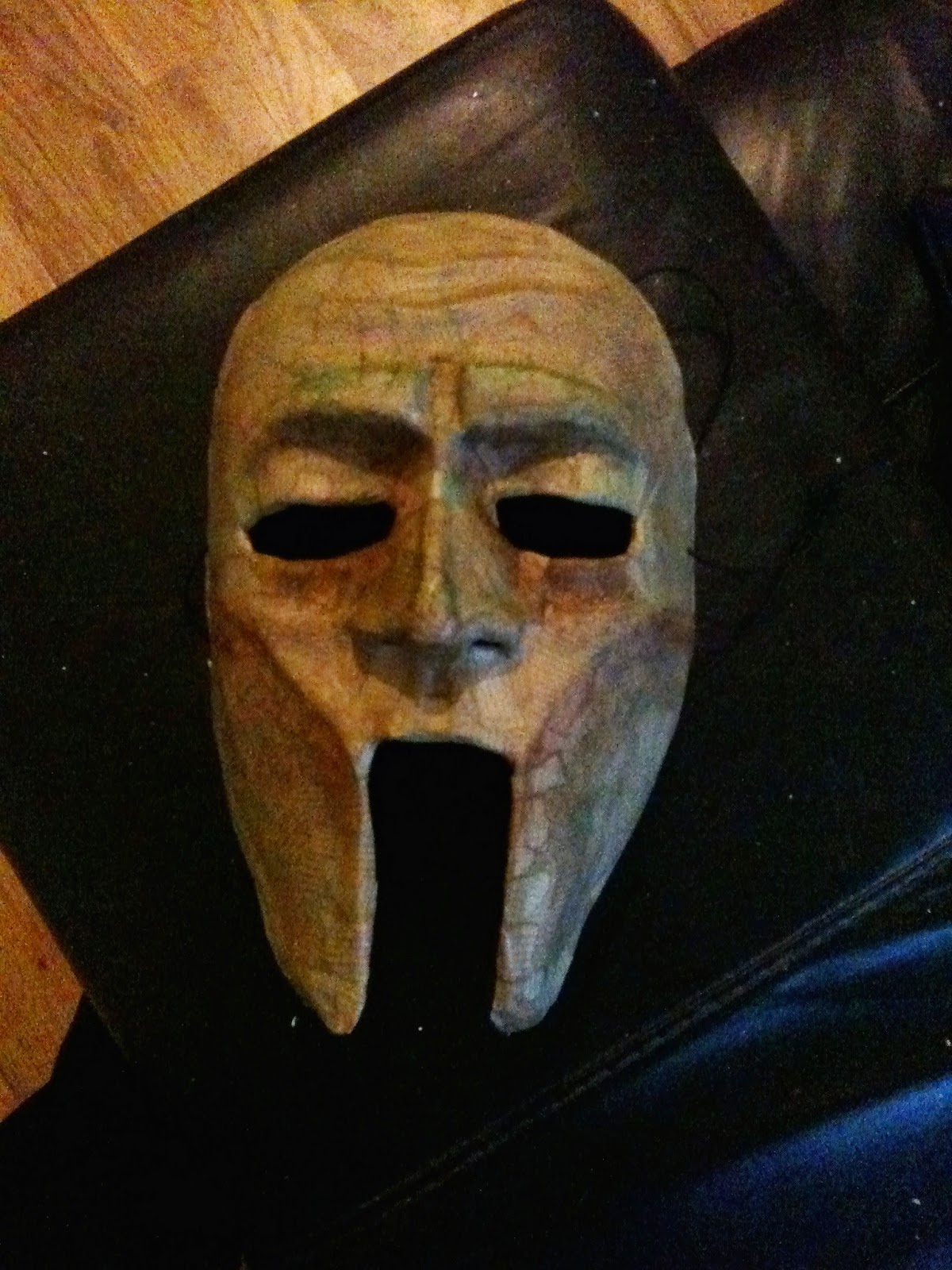Over the past week, we have been learning a new skill. We have started to build a basis of knowledge about mask making. One of the types that we have been learning is the process of prosthetic mask making. We started off in small group of five and one member of the group put themselves forward to be the model for the mask. This process involved using latex, placing it onto the model's entire face, making sure that the nostrils were kept clear of the mixture. Somebody in the group was on duty to make sure that the models nostrils weren't covered and that the model felt comfortable and able to breath comfortably.

After the mixture are solidified a bit more, we then used cut up strips of mod rock and started covering the latex. Again making sure that the models nose wasn't covered up and that they still felt comfortable. After adding a couple of layers to the mod rock, we then waited for it to strengthen, before taking the whole mould off of the models face.
Once the mould was completely removed, it was really fascinating to see the fine details of the eyelashes and eyebrows that the mould had picked up.
Because we didn't cover up the models nose whilst layering up the materials over the mould, there was a hole in the mould. To fix this we added more mod rock to strengthen the nose section. The mod rock creates a hard external layer which is necessary apply because once we add the plaster the mould can loose it's shape, distorting the face, which means that it wouldn't fit properly back onto the model once finished.

The mould of Jenny's face then gave us the basis to create the character that we designed. An old haggered witch. From here we then covered the mould of Jenny's face with clay to create the features of the witch. This process was shared between us all and we all had separate sections that we added to the process. Starting with the basis of the witches facial features, then bulking out the shape and defining some lines. The last step was to create texture to the face. We did this by using a soft paint brush to create lines across the face and a spatula to add deep wrinkles in the forehead and cheeks.
The next step was to take the negative mould of the witches face and insert the original mould of Jenny's face. Creating the colours of the face was the next step. For this we added equal measures of polyurethane and mixed them together, making sure that all was equally mixed, then adding tiny amounts of colour to the mixtures. We chose to make a fleshy colour and add a bit of green to the mixture so that the witch looked evil and old. This process had to be done quite quickly in order for the mixture to work properly,it also should be done from a slight height and at one point only, this is to make sure that there are reduced risks of air bubbles.


We added the colours into the mould and tilted the mould around to make sure that there weren't any air bubbles in the mixture.
After leaving the mixture for about half an hour we returned to check on it. We actually found that there was a crack in the mould and that some of our mixture had leaked out, we fixed this by adding some fresh clay to patch up the leak.
Overall I think that we worked well in a team and that the final outcome was fairly successful.
The only thing that I believe we might have worked on a bit more, was designing and developing the character. The actual face and the design worked well, what I mean is that when it came to colouring and making textures for the face, as a group we weren't quite ready or sure as to what we wanted. Another thing that would have been better, had we had time to think and work around was the fact that once we had glued the mask onto Jenny's face we learnt from jenny that the forehead was very heavy and that it slipped down her head, moving down onto her eyes, making it uncomfortable. To counter act this we worked on holding the mask in place, holding different sections to prevent it from sliding. To complete the mask we painted on top of the mask whilst it was secure to Jenny's face to create deeper shadows and age spots.



























